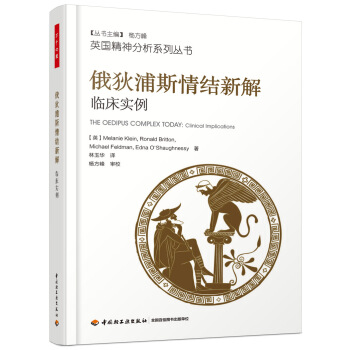![这才是心理学(英文版,第10版) [How to think straight about psychology]](https://pic.tinynews.org/12148857/5981841bN303ffbdb.jpg)

具体描述
编辑推荐
适读人群 :心理学专业或准备选修心理学课程的学生,心理学爱好者拨除迷雾,去伪存真,教你如何使用批判性思维,在“伪心理学”横行的时代分辨出什么才是真正的心理学;
清华大学心理学系系主任彭凯平教授特别推荐给普通读者的心理学入门读物;
科学松鼠会推荐的心理学必读书籍;
全球300多所心理学院校采用的心理学入门教材;
全新第10版,英文原版,原汁原味。
内容简介
在今天的大众媒体和图书市场上,到处充斥着关于潜能提升、心理操控、色彩星座、催眠读心等伪装成心理学的主题,更有一些伪心理学家、所谓的心理治疗师打着心理学的旗号欺世盗名,从中渔利。在浩如烟海、良莠不齐的心理学信息面前,如何拨除迷雾,去伪存真,成为一个明智的心理学信息的消费者?这本书将教给你科学实用的批判性思维技能,将真正的心理学研究从伪心理学中区分出来,告诉你什么才是真正的心理学。《这才是心理学》第1版出版于1983年,30多年来一直被奉为心理学入门经典,在全球**大学中享有盛誉,现在呈现在读者面前的是英文第10版。这本书并不同于一般的心理学导论类教材,很多内容是心理学课堂上不曾讲授的,也是许多心理学教师在教学中感到只可意会而不可言传的。作者正是从此初衷出发,以幽默生动的语言,结合一些妙趣横生、贴近生活的实例,深入浅出地介绍了可证伪性、操作主义、实证主义、安慰剂效应、相关和因果、概率推理等心理学中的基本原则。与上一版相比,第10版更新了*新的研究资料和实例以及172篇参考文献。
本书不仅适合于心理学专业的学生,有助于建立心理学研究中必要的批判性思维技能与意识,而其通俗易读性也非常适合所有对心理学感兴趣的读者,它将帮助你纠正对心理学的种种误解,学会独立地评估心理学信息,用科学的精神和方法理解自己和他人的行为。此外,由于心理学与其他学科的共通性,本书也不失为一本精彩有趣的科学哲学类读物。
作者简介
基思·斯坦诺维奇(Keith E. Stanovich),目前担任加拿大多伦多大学人类发展与应用心理学的国家首席教授,他的研究领域是推理和阅读的心理学机制。他于2010年获得格威尔美尔教育奖(Grawemeyer Award in Education)。他至今已发表了200多篇科学论文。在一项对于论文引用率的调查中,斯坦诺维奇位列引用率*高的50位发展心理学家之一,也是25位高产的教育心理学家之一。他所撰写的《这才是心理学》(How to Think Straight about Psychology)一书被全球300多所心理学高等教育机构采用。
精彩书评
这本“与众不同的心理学”教科书,总结了心理学家的职业特质,让每一位读者都有机会去理解我们心理学家是如何去思考、分析和解读人类的行为和心理的。每一章都将一个常识的、朴素的、直觉的有关人类心理的分析和思考与一个科学的、严谨的、心理学的分析和思考相对比,以帮助读者理解心理学家的分析逻辑和研究思路。——彭凯平教授清华大学心理学系系主任
美国加州大学伯克利分校心理学系终身教授
这本书在第1版时,我已经开始把它推荐给我的学生,那是三十多年前的事了。现在它已经出到第10版了,可见它深受几代老师及学生的喜爱。
这本书之所以能如此有生命力,我想主要是因为作者能把一个非常枯燥及严肃的题材讲得那么生动易懂,引起老师和学生们在课堂上热烈的讨论及哈哈的笑声。阅读本书,可以让人们认识到及分辨出什么样的研究及数据才是真正科学的及可信的。为此,我不单只把它推荐给大专院校心理学系的学生作为研究方法课的教材,也强烈推荐给一般读者。
——杨中芳教授
中国社会科学院社会学研究所社会心理研究中心客座研究员
心理学本身已经离弗洛伊德那个年代很远很远了。如果你是一个心理学爱好者,或者心理学初学者,又或者是高考填志愿想选择心理学为专业的学生,都强烈建议你们看一下这本书,这也许与你想象中的心理学有巨大的差别,但是这才是目前心理学发展的真正方向!
——读者
目录
Preface xi1 Psychology Is Alive and Well (and Doing Fine Among the Sciences) 1
The Freud Problem 1
The Diversity of Modern Psychology 3
Implications of Diversity 4
Unity in Science 6
What, Then, Is Science? 8
Systematic Empiricism 9
Publicly Verifiable Knowledge: Replication and Peer Review 10
Empirically Solvable Problems: Scientists’ Search for Testable Theories 12
Psychology and Folk Wisdom: The Problem with “Common Sense” 13
Psychology as a Young Science 17
Summary 18
2 Falsifiability: How to Foil Little Green Men in the Head 21
Theories and the Falsifiability Criterion 22
The Theory of Knocking Rhythms 23
Freud and Falsifiability 24
The Little Green Men 26
Not All Confirmations Are Equal 28
Falsifiability and Folk Wisdom 29
The Freedom to Admit a Mistake 29
Thoughts Are Cheap 32
Errors in Science: Getting Closer to the Truth 33
Summary 36
3 Operationism and Essentialism: “But, Doctor,What Does It Really Mean?” 37
Why Scientists Are Not Essentialists 37
Essentialists Like to Argue About the Meaning of Words 38
Operationists Link Concepts to Observable Events 39
Reliability and Validity 40
Direct and Indirect Operational Definitions 42
Scientific Concepts Evolve 43
Operational Definitions in Psychology 45
Operationism as a Humanizing Force 47
Essentialist Questions and the Misunderstanding of Psychology 49
Summary 51
4 Testimonials and Case Study Evidence: Placebo Effects and the Amazing Randi 53
The Place of the Case Study 54
Why Testimonials Are Worthless: Placebo Effects 56
The “Vividness” Problem 59
The Overwhelming Impact of the Single Case 62
The Amazing Randi: Fighting Fire with Fire 64
Testimonials Open the Door to Pseudoscience 65
Summary 71
5 Correlation and Causation: Birth Control
by the Toaster Method 73
The Third-Variable Problem: Goldberger and Pellagra 74
Why Goldberger’s Evidence Was Better 75
The Directionality Problem 78
Selection Bias 79
Summary 83
6 Getting Things Under Control: The Case of Clever Hans 85
Snow and Cholera 86
Comparison, Control, and Manipulation 87
Random Assignment in Conjunction with Manipulation
Defines the True Experiment 88
The Importance of Control Groups 90
The Case of Clever Hans, the Wonder Horse 95
Clever Hans in the 1990s 97
Prying Variables Apart: Special Conditions 100
Intuitive Physics 102
Intuitive Psychology 103
Summary 106
7 “But It’s Not Real Life!”: The “Artificiality” Criticism and Psychology 107
Why Natural Isn’t Always Necessary 107
The “Random Sample” Confusion 108
The Random Assignment Versus Random Sample Distinction 109
Theory-Driven Research Versus Direct Applications 110
Applications of Psychological Theory 115
The “College Sophomore” Problem 117
The Real-Life and College Sophomore Problems in Perspective 120
Summary 121
8 Avoiding the Einstein Syndrome: The Importance of Converging Evidence 123
The Connectivity Principle 124
A Consumer’s Rule: Beware of Violations of Connectivity 125
The “Great-Leap” Model Versus the Gradual-Synthesis Model 126
Converging Evidence: Progress Despite Flaws 128
Converging Evidence in Psychology 130
Scientific Consensus 134
Methods and the Convergence Principle 136
The Progression to More Powerful Methods 137
A Counsel Against Despair 139
Summary 142
9 The Misguided Search for the “Magic Bullet”: The Issue of Multiple Causation 143
The Concept of Interaction 144
The Temptation of the Single-Cause Explanation 147
Summary 150
10 The Achilles’ Heel of Human Cognition:
Probabilistic Reasoning 151
“Person-Who” Statistics 153
Probabilistic Reasoning and the Misunderstanding
of Psychology 154
Psychological Research on Probabilistic Reasoning 156
Insufficient Use of Probabilistic Information 157
Failure to Use Sample-Size Information 159
The Gambler’s Fallacy 161
A Further Word About Statistics and Probability 163
Summary 165
11 The Role of Chance in Psychology 167
The Tendency to Try to Explain Chance Events 167
Explaining Chance: Illusory Correlation and the Illusion of Control 170
Chance and Psychology 172
Coincidence 172
Personal Coincidences 175
Accepting Error in Order to Reduce Error: Clinical Versus Actuarial Prediction 176
Summary 183
12 The Rodney Dangerfield of the Sciences 185
Psychology’s Image Problem 185
Psychology and Parapsychology 186
The Self-Help Literature 188
Recipe Knowledge 190
Psychology and Other Disciplines 192
Our Own Worst Enemies 193
Isn’t Everyone a Psychologist? Implicit Theories of Behavior 199
The Source of Resistance to Scientific Psychology 200
The Final Word 205
References 207
Credits 229
Name Index 230
Subject Index 237
精彩书摘
The Freud ProblemStop 100 people on the street and ask them to name a psychologist, either living or dead. Record the responses. Of course, Dr. Phil, Wayne Dyer, and other “media psychologists” would certainly be named. If we leave out the media and pop psychologists, however, and consider only those who have made a recognized contribution to psychological knowledge, there would be no question about the outcome of this informal survey. Sigmund Freud would be the winner hands down. B. F. Skinner would probably finish a distant second. No other psychologist would get enough recognition even to
bother about. Thus, Freud, along with the pop psychology presented in the media, largely defines psychology in the public mind.
The notoriety of Freud has greatly affected the general public’s conceptions about the field of psychology and has contributed to many misunderstandings. For example, many introductory psychology students are surprised to learn that, if all the members of the American Psychological Association (APA) who were concerned with Freudian psychoanalysis were collected, they would make up less than 10 percent of the membership. In another major psychological association, the Association for Psychological Science, they would make up considerably less than 5 percent. One popular introductory psychology textbook (Wade & Tavris, 2008) is over 700 pages long, yet contains only 15 pages on which either Freud or psychoanalysis is mentioned—and these 15 pages often contain
criticism (“most Freudian concepts were, and still are, rejected by most empirically oriented psychologists,” p. 19).
In short, modern psychology is not obsessed with the ideas of Sigmund Freud (as are the media and some humanities disciplines), nor is it largely defined by them. Freud’s work is an extremely small part of the varied set of issues, data, and theories that are the concern of modern psychologists. This
larger body of research and theory encompasses the work of five recent Nobel Prize winners (David Hubel, Daniel Kahneman, Herbert Simon, Roger Sperry, and Torsten Wiesel) and a former director of the National Science Foundation (Richard Atkinson), all of whom are virtually unknown to the public.
It is bad enough that Freud’s importance to modern psychology is vastly exaggerated. What makes the situation worse is that Freud’s methods of investigation are completely unrepresentative of how modern psychologists conduct their research (recall that Freud began his work over a hundred years ago). In fact, the study of Freud’s methods gives an utterly misleading impression of psychological research. For example, Freud did not use controlled experimentation, which, as we shall see in Chapter 6, is the most potent weapon in the modern psychologist’s arsenal of methods. Freud thought that case studies could establish the truth or falsity of theories. We shall see in Chapter 4 why this idea is mistaken. Finally, a critical problem with Freud’s work concerns the connection between theory and behavioral data. As we shall see in Chapter 2, for a theory to be considered scientific, the link between the theory and behavioral data must meet some minimal requirements. Freud’s theories do not meet these criteria (Dufresne, 2007; Hines, 2003; Macmillan, 1997; McCullough, 2001). To make a long story short, Freud built an elaborate theory on a database (case studies and introspection) that was not substantial enough to support it. Freud concentrated on building complicated theoretical structures, but he did not, as modern psychologists do, ensure that they would rest on a database of reliable, replicable behavioral relationships. In summary, familiarity with Freud’s style of work can be a significant impediment to the understanding of modern psychology.
In this chapter, we shall deal with the Freud problem in two ways. First, when we illustrate the diversity of modern psychology, the rather minor position occupied by Freud will become clear (see Haggbloom et al., 2002; Robins, Gosling, & Craik, 1999, 2000). Second, we shall discuss what features are common to psychological investigations across a wide variety of domains. A passing knowledge of Freud’s work has obscured from the general public what is the only unifying characteristic of modern psychology: the quest to understand behavior by using the methods of science.
The Diversity of Modern Psychology
There is, in fact, a great diversity of content and perspectives in modern psychology. This diversity drastically reduces the coherence of psychology as a discipline. Henry Gleitman (1981), winner of the American Psychological Foundation’s Distinguished Teaching Award, characterized psychology as “a loosely federated intellectual empire that stretches from the domains of the biological sciences on one border to those of the social sciences on the other” (p. 774). Commentators outside of psychology have criticized this diversity. For example, anthropologist Clifford Geertz (2000) has complained that “from the outside, at least, it does not look like a single field, divided into schools and specialties in the usual way. It looks like an assortment of disparate and disconnected inquiries classed together because they all make reference in some way or other to something or other called mental
functioning” (p. 187).
Understanding that psychology is composed of an incredibly wide and diverse set of investigations is critical to an appreciation of the nature of the discipline. Simply presenting some of the concrete indications of this diversity will illustrate the point. The APAhas 54 different divisions, each representing either a particular area of research and study or a particular area of practice (see Table 1.1). From the table, you can see the range of subjects studied by psychologists, the range of settings involved, and the different aspects of behavior studied. The other large organization of psychologists—the Association for Psychological Science—is just as diverse. Actually, Table 1.1 understates the diversity within the field of psychology because it gives the impression that each division is a specific specialty area. In fact, each of the 54 divisions listed in the table is a broad area of study that contains a wide variety of subdivisions! In short, it is difficult to exaggerate the diversity of the topics that fall within the field of psychology.
……
前言/序言
New to the Tenth EditionThe tenth edition of How to Think Straight About Psychology has no major structural revisions because a chapter reorganization occurred in a previous edition. The content and order of the chapters remain the same. At the request of reviewers and users, this edition remains at the same length as the ninth edition. Readers and users have not wanted the book to lengthen and, indeed, it has not. I have continued to update and revise the examples that are used in the book (while keeping those that are reader favorites).
Some dated examples have been replaced with more contemporary studies and issues. I have made a major effort to use contemporary citations that are relevant to the various concepts and experimental effects that are mentioned. A large number of new citations appear in this edition (172 new citations, to be exact!), so that the reader continues to have up-to-date references on all of the examples and concepts.
The goal of the book remains what it always was—to present a short introduction to the critical thinking skills that will help the student to better understand the subject matter of psychology. During the past decade and a half there has been an increased emphasis on the teaching of critical thinking in universities (Abrami et al., 2008; Sternberg, Roediger, & Halpern, 2006). Indeed, some state university systems have instituted curricular changes mandating an emphasis on critical thinking skills. At the same time, however, other educational scholars were arguing that critical thinking skills should not be isolated from specific factual content. How to Think Straight About Psychology combines these two trends. It is designed to provide the instructor with the opportunity to teach critical thinking within the rich content of modern psychology.
Readers are encouraged to send me comments at: keith.stanovich@utoronto.ca.
There exists a body of knowledge that is unknown to most people. This information concerns human behavior and consciousness in their various forms. It can be used to explain, predict, and control human actions. Those who have access to this knowledge use it to gain an understanding of other human beings. They have a more complete and accurate conception of what determines the behavior and thoughts of other individuals than do those
who do not have this knowledge.
Surprisingly enough, this unknown body of knowledge is the discipline of psychology.
What can I possibly mean when I say that the discipline of psychology is unknown? Surely, you may be thinking, this statement was not meant to be taken literally. Bookstores contain large sections full of titles dealing with psychology. Television and radio talk shows regularly feature psychological topics. Magazine articles quote people called psychologists talking about a variety of topics. Nevertheless, there is an important sense in which the field of psychology is unknown.
Despite much seeming media attention, the discipline of psychology remains for the most part hidden from the public. The transfer of “psychological” knowledge that is taking place via the media is largely an illusion. Few people are aware that the majority of the books they see in the psychology sections of many bookstores are written by individuals with absolutely no standing in the psychological community. Few are aware that many of the people to whom television applies the label psychologist would not be considered so by the American Psychological Association or the Association for Psychological Science. Few are aware that many of the most visible psychological “experts” have contributed no information to the fund of knowledge in the discipline of psychology.
The flurry of media attention paid to “psychological” topics has done more than simply present inaccurate information. It has also obscured the very real and growing knowledge base in the field of psychology. The general public is unsure about what is and is not psychology and is unable to independently evaluate claims about human behavior. Adding to the problem is the fact that many people have a vested interest in a public that is either without evaluative skills or that believes there is no way to evaluate psychological claims. The latter view, sometimes called the “anything goes” attitude, is one of the fallacies discussed in this book, and it is particularly costly to the public. Many pseudosciences are multimillion-dollar industries that depend on the lack of public awareness that claims about human behavior can be tested. The general public is also unaware that many of the claims made by these pseudosciences (e.g., astrology, psychic surgery, speed reading, biorhythms, therapeutic touch, subliminal self-help tapes, facilitated communication, and psychic detectives) have been tested and proved false. The existence of the pseudoscience industry, which is discussed in this book, increases the media’s tendency toward sensationalistic reporting of science. This tendency is worse in psychology than in other sciences, and
understanding the reasons why this is so is an important part of learning how to think straight about psychology.
This book, then, is directed not at potential researchers in psychology but at a much larger group: the consumers of psychological information. The target audience is the beginning psychology student and the general reader who have encountered information on psychological issues in the general media and have wondered how to go about evaluating its validity.
This book is not a standard introductory psychology text. It does not outline a list of facts that psychological research has uncovered. Indeed, telling everyone to take an introductory psychology course at a university is probably not the ultimate solution to the inaccurate portrayal of psychology in the media. There are many laypeople with a legitimate interest in psychology who do not have the time, money, or access to a university to pursue formal study. More importantly, as a teacher of university-level psychology courses, I am forced to admit that my colleagues and I often fail to give our beginning students a true understanding of the science of psychology. The reason is that lower-level courses often do not teach the critical analytical skills that are the focus of this book. As instructors, we often become obsessed with “content”—with “covering material.” Every time we stray a little from the syllabus to discuss issues such as psychology in the media, we feel a little guilty and begin to worry that we may not cover all the topics before the end of the term.
Consider the average introductory psychology textbook. Many now contain between 600 and 800 multicolumned pages and reference literally hundreds of studies in the published literature. Of course, there is nothing wrong with such books containing so much material. It simply reflects the increasing knowledge base in psychology. There are, however, some unfortunate side effects. Instructors are often so busy trying to cram their students full of dozens of theories, facts, and experiments that they fail to deal with some of the fundamental questions and misconceptions that students bring with them to the study of psychology. Rather than dealing directly with these misconceptions, the instructors (and the introductory textbook authors) often hope that if students are exposed to enough of the empirical content of psychology, they will simply induce the answers to their questions. In short, the instructors hope that students will recognize the implicit answers to these questions in the discussions of empirical research in several content areas. All too often this hope is frustrated. In a final review session—or in office hours at the end of the term—instructors are often shocked and discouraged by questions and comments that might have been expected on the first day of the course but not after 14 weeks: “But psychology experiments aren’t real life; what can they tell us?”; “Psychology just can’t be a real science like chemistry, can it?”; “But I heard a therapist on TV say the opposite of what our textbook said”; “I think this theory isstupid—my brother behaves just the opposite of what it says”; “Psychology is nothing more than common sense, isn’t it?”; “Everyone knows what anxiety
is—why bother defining it?” For many students, such questions are not implicitly answered merely by a consideration of the content of psychology. In this book, I deal explicitly with the confusions that underlie questions and comments such as these.
Unfortunately, research has shown that the average introductory psychology course does surprisingly little to correct some of entering students’ misconceptions about the discipline (Keith & Beins, 2008; Kowalski & Taylor, 2009; Standing & Huber, 2003; Taylor & Kowalski, 2004). This unfortunate fact provides the rationale for this book. Psychology students need explicit instruction in the critical thinking skills that will make them into independent evaluators of psychological information.
Years after students have forgotten the content of an introductory psychology course, they will still use the fundamental principles covered in this book to evaluate psychological claims. Long after Erikson’s stages of development have been forgotten, students will be using the thinking tools introduced in this text to evaluate new psychological information encountered in the media. Once acquired, these skills will serve as lifelong tools that will aid in the evaluation of knowledge claims. First, they provide the ability to conduct an initial gross assessment of plausibility. Second, these skills provide some criteria for assessing the reliability of “expert” opinion.
用户评价
这本书的语言风格非常独特,既有科学的严谨性,又不失学术的深度,同时还充满了生活化的趣味。作者善于运用一些幽默的笔触,来调侃那些不科学的心理学说法,让我读起来一点都不枯燥,反而会时不时地发出会心的笑声。他会用一些非常形象的比喻,来解释复杂的心理学概念,让我在轻松愉快的氛围中就掌握了知识。比如,他用“沙漏”来比喻我们对大脑的了解程度,用“芝麻开门”来比喻隐藏在表象下的科学原理。这些生动的描绘,让抽象的概念变得具象化,易于理解和记忆。我特别喜欢作者在处理一些有争议的话题时,那种理性而又不失温度的论述方式。他既会毫不留情地揭露谬误,又会站在科学的角度,客观地分析问题的根源。这种“敢说真话,又能说透”的功力,让我对作者的智慧和学识佩服得五体投地。
评分让我印象特别深刻的是,作者在书中展现出的那种对科学严谨性的执着追求。他反复强调,任何关于人类行为和心理的解释,都必须建立在可重复、可验证的证据之上。他会耐心地解释什么是科学方法,什么是实验设计,什么是统计学在心理学研究中的作用。这种讲解并不是枯燥的理论灌输,而是通过拆解各种研究,让读者亲身体验科学探索的过程。我记得他分析某个心理学理论时,会详细说明研究者是如何设计实验来验证或反驳这个理论的,其中遇到的困难,以及如何通过改进研究方法来克服这些困难。这种对细节的关注,让我看到了科学研究背后付出的巨大努力和智慧。同时,作者也并没有回避科学的局限性。他会坦诚地指出,心理学研究仍然有很多未解之谜,很多理论也处于不断发展和完善之中。但他坚信,即使存在局限性,科学方法仍然是认识世界最可靠的途径。这种诚实和谦逊的态度,反而让我对心理学产生了更深的信任。这本书让我明白,真正的知识不是一夜之间产生的,而是通过无数次的观察、实验、分析和反思,一点一滴积累起来的。
评分阅读这本书的过程中,我最深的感受是作者对于“批判性思维”的极致推崇和细致讲解。他并非只是空泛地强调批判性思维的重要性,而是通过大量生动有趣的案例,将这一概念具体化、可操作化。比如,他会剖析一些流行但缺乏科学依据的心理疗法,或者揭露一些媒体报道中常见的心理学误读。在分析这些案例时,作者会引导读者去关注证据的质量、研究的设计、样本的代表性,以及是否存在其他更合理的解释。这让我彻底摆脱了过去那种“听起来有道理就是对的”的思维定式。我学会了在面对任何关于心理学的说法时,都要问“证据在哪里?”,“这个证据可靠吗?”,“是否有其他可能?”,“结论是否被过度推广了?”。这种思维方式的转变,不仅仅局限于对心理学的理解,它已经渗透到我生活的方方面面,让我对各种信息都多了一份审慎和理性。我不再轻易相信网络上的耸人听闻的“研究结果”,也不再盲目追捧那些号称能解决一切问题的“心理秘籍”。这本书真的像一位循循善诱的导师,一点点地打磨我的思维,让我变得更加敏锐和独立。它教会我的是一种独立思考的能力,一种不被表面现象所迷惑的能力,而这在信息爆炸的时代,无疑是极其宝贵的财富。
评分《这才是心理学》这本书,对我最大的意义在于,它让我重新认识了“证据”的重要性。在很多时候,我们倾向于相信那些“听起来对”的说法,而忽略了它们背后的证据是否充分和可靠。作者在书中反复强调,科学的结论必须建立在可靠的证据之上。他会通过大量的例子,来展示那些看似有道理的说法,在缺乏证据支撑的情况下,是如何站不住脚的。他会引导读者去分析研究的设计、样本的大小、统计学方法的运用,以及研究结果的局限性。这种对证据的审视,让我学会了在生活中,不再轻易地相信任何未经证实的说法。无论是关于健康、教育,还是社会问题,我都会习惯性地去追问“证据在哪里?”,“这些证据是否可靠?”,“是否存在其他更合理的解释?”。这种思维习惯的养成,让我在面对各种信息时,都能够保持一份清醒和理性,不被虚假的宣传所迷惑。
评分这本书的封面设计就充满了力量感,那种简约而又深刻的视觉冲击力,瞬间就吸引了我。我是一个对心理学一直抱有好奇心,但又常常被各种“心灵鸡汤”和未经证实的理论弄得晕头转向的人。每次看到那些声称能“立马改变人生”、“揭示灵魂秘密”的书,我都会感到一丝警惕,但又忍不住想去了解。而《这才是心理学》的封面,仿佛在无声地告诉我:“放心,这里有真正的东西。” 打开书页,最先映入眼帘的并非艰深的学术术语,而是一种清晰、理性、甚至带点幽默的语言风格。作者在开篇就用一种非常接地气的方式,点明了本书的核心——如何用科学的思维方式去审视心理学领域中层出不穷的各种观点和说法。他没有直接灌输知识,而是教你一种“看”的方法,一种“思考”的工具。我尤其喜欢作者在处理一些普遍存在的心理学误区时那种不留情面却又充满智慧的揭示。他不会简单地否定,而是会一步步地引导读者去分析,去追溯理论的源头,去考察其证据链条。这种循循善诱的方式,让我觉得学习过程不再是被动的接受,而是一种主动的探索和发现。这本书让我意识到,原来心理学并非是那些难以捉摸的神秘学问,而是可以通过严谨的科学方法去研究和理解的。它就像一把钥匙,打开了我对真实心理学世界的一扇窗,让我看到了那些隐藏在表象之下的逻辑和真相。
评分《这才是心理学》给我带来的最深刻的改变,是对“常识”的反思。我们生活中充斥着各种被认为是“常识”的心理学说法,比如“左脑理性,右脑感性”,“天才都是孤独的”,“人只有10%的脑力没有被开发”等等。在读这本书之前,我可能都会不假思疑地接受这些说法。但作者通过严谨的科学分析,一一揭露了这些“常识”背后的误导和欺骗。他会引用大量的研究数据,展示科学家们是如何通过实验来检验这些说法的,最终得出科学的结论。这让我意识到,很多我们习以为常的观念,可能根本站不住脚,甚至是完全错误的。这本书就像一个“心理学的净化器”,帮助我洗刷掉那些被污染的认知,建立起一个更清晰、更准确的心理学图景。我开始质疑那些听起来“有道理”的说法,学会去寻找支持这些说法的证据,并评估证据的可靠性。这种对“常识”的批判性审视,让我在面对各种信息时,都能够保持一份理性和独立,不被轻易地误导。
评分这本书真的让我有一种“醍醐灌顶”的感觉。它不仅仅是一本关于心理学的科普读物,更是一本关于如何独立思考、如何辨别真伪的“思维指南”。作者用他渊博的知识和犀利的笔触,为我们揭示了心理学领域中存在的种种误区和陷阱,并教导我们如何运用科学的方法去规避它们。我最欣赏的是,作者并没有将自己塑造成一个全知全能的“大师”,而是以一种谦逊的态度,向读者展示了科学探索的艰难和乐趣。他鼓励读者也要成为一个积极的思考者,要敢于质疑,要勇于探究。这本书让我明白了,真正的学习,不是被动地接受信息,而是主动地去探索,去理解,去构建自己的认知体系。它像一盏明灯,照亮了我通往理性思考的道路,让我对未来的学习和生活充满了信心。
评分这本书最让我惊喜的地方在于,它并没有将心理学描绘成一种高高在上、只属于专业人士的学科。相反,作者用一种极其易懂、生动,甚至充满个人魅力的语言,将心理学的核心理念呈现给普通读者。他善于运用各种生动的比喻和生活化的例子,将抽象的心理学概念解释得清晰明了。比如,在讲解“证伪原则”时,他会用一个关于“所有天鹅都是白色的”的经典例子,让我瞬间就理解了科学理论的不可证伪性。在谈论“相关不等于因果”时,他会举出一些我们生活中常见的现象,比如夏天冰淇淋销量上升,溺水人数也随之增加,但这并不意味着吃冰淇淋会导致溺水。这种深入浅出的讲解方式,让我在阅读过程中一点都不感到吃力,反而充满了乐趣。我感觉作者就像一位和蔼可亲的朋友,在和我分享他对于心理学的理解和感悟,而不是一位高高在上的学者在传授知识。这种亲切感,让我能够更自然地接受和吸收书中的内容。
评分读完《这才是心理学》之后,我最大的体会就是,原来我们对于“心理学”的认知,很大程度上是被娱乐化和商业化所误导的。市面上充斥着各种迎合大众猎奇心理的“心灵读物”,它们往往夸大其词,缺乏科学依据,甚至会误导读者。而这本书,则旗帜鲜明地站在了科学的立场上,用一种负责任的态度,向读者展示了真正的心理学是什么样的。作者在书中多次强调,科学研究是一个充满艰辛和曲折的过程,它不可能像娱乐节目那样瞬间提供“答案”。他鼓励读者要有耐心,要学会辨别信息来源的可靠性,要对那些声称能“包治百病”的理论保持警惕。这种朴实而又坚定的科学精神,让我对作者产生了由衷的敬意。他不仅仅是在传播知识,更是在传递一种科学价值观,一种对于真理的追求。这本书让我明白,真正的心理学,是关于理解人类行为的复杂性,是关于不断探索和修正的科学过程,而不是那些廉价的“速效药”。
评分这本书的章节安排非常合理,逻辑清晰,层层递进,就像一部精巧的侦探小说,一步步地引导读者去揭开心理学的真相。从一开始对科学方法的基本介绍,到后面深入探讨各种心理学现象,作者始终围绕着“如何用科学的方法去思考”这一主线。他并没有试图一次性地把所有心理学知识都塞给读者,而是专注于教会读者一种思考模式。让我印象深刻的是,作者在介绍某个心理学理论时,会先指出这个理论可能存在的误区,然后才开始解释这个理论的科学依据以及其在研究中的应用。这种“先破后立”的方式,让我更容易理解理论的内涵,也更能体会到科学的严谨性。而且,每个章节的结尾,作者都会给出一些启发性的思考题,或者总结性的陈述,让我能够巩固所学的知识,并将其运用到实际中去。这种学习体验,让我感觉自己不仅仅是在阅读一本书,而是在参与一场关于认识心理学的精彩旅程。
评分好
评分我为什么喜欢在京东买东西,因为今天买明天就可以送到。我为什么每个商品的评价都一样,因为在京东买的东西太多太多了,导致积累了很多未评价的订单,所以我统一用段话作为评价内容。京东购物这么久,有买到很好的产品,也有买到比较坑的产品,如果我用这段话来评价,说明这款产品没问题,至少85分以上,而比较差的产品,我绝对不会偷懒到复制粘贴评价,我绝对会用心的差评,这样其他消费者在购买的时候会作为参考,会影响该商品销量,而商家也会因此改进商品质量。
评分经典,慢慢啃。
评分还不错。物流挺快。京东就是好啊。书还没看
评分质量不错,买了一堆书
评分帮妹妹买的
评分很不错的一本心理学入门书籍,值得一读!
评分看纸张像国内生产的的。希望内容不错
评分不错
相关图书
本站所有内容均为互联网搜索引擎提供的公开搜索信息,本站不存储任何数据与内容,任何内容与数据均与本站无关,如有需要请联系相关搜索引擎包括但不限于百度,google,bing,sogou 等
© 2025 book.tinynews.org All Rights Reserved. 静思书屋 版权所有
















![爱的性格:内向者与外向者的亲密之道 [The Introvert and Extrovert in Love: Making It Wor] pdf epub mobi 电子书 下载](https://pic.tinynews.org/12153579/59926306Naed17e8e.jpg)



